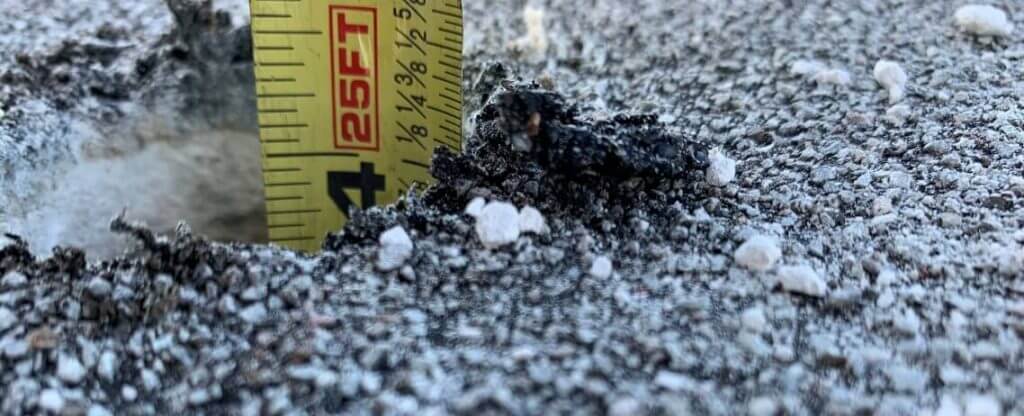WHAT IS A ROOF CORE CUT?

There are many variables that help determine the way to build and price a roof replacement. One of the most critical steps is the core cut.
A core cut is when the layers are cut through and removed to examine a sample of the existing roof system. Roofers use a special core cut tool to extract a small area of roofing down to the roofing deck. Once the core is pulled the results are documented and then the core is put back and the hole is repaired.
WHAT DOES A ROOF CORE CUT TELL US?
- Thickness: How thick is the current roof system?
- Layers: How many layers of roof or roof assemblies are in place?
- Composition: What are the different layers and weights of those layers?
- Slope Identification: Is the slop on the roof in the insulation or in the roof deck?
- Materials Used: By analyzing the core samples you can identify the materials used for its construction. You can also determine if there are hazardous materials (e.g Phelonic Foam) in the assembly.
- Roof Deck Details: What is the roof deck that is supporting the roof system?
- Moisture Detection: Is there water trapped in the roof assembly?
WHAT ARE THE BENEFITS OF ROOF CORE CUT TESTING?
A major benefit of conducting a core test is to determining the cost of the roofing project. Core tests help decide on an accurate price based on the following factors:
- Building Code: Buildings with more than two roof systems in place typically require complete removal down to the roof deck as per building code. if the building owner is unaware of how many roof systems are currently in place, a core cut would determine the number of layers.
- Length Of Fasteners: It is critical to establish the length of fasteners needed to ensure that they penetrate the deck by the required amount. the longer fasteners will have a higher cost.
- Disposal Fees: The cost of disposal depends on the composition of the roof, the number of layers, and their respective weights which can be determined using the results of the core cut test.
- Removal Of Hazardous Materials: The presence of phenolic foam and other hazardous materials calls for specific handling measures and disposal methods. costs associated with this must be incorporated in pricing associated with a roof replacement. (hazardous materials are handled and disposed of by professionals who are certified and trained to handle hazardous materials).
- Insulation R-Value Required: Core cut testing reveals the type of insulation material used and its value. you might need to upgrade it based on the analysis, which can impact the roofing cost.
- Slope: Positive drainage for the roof assembly is required by many building codes and manufacturers. positive drainage is either achieved through the slope in the roof deck or by adding tapered insulation. core samples reveal if the slope is in the building structure or if it has been enhanced by tapered insulation. costs associated with roof replacements are deeply impacted by this factor.
- Deck Type: It is important to determine the deck type of your roof, which may not be able to be ascertained by an underdeck inspection. in this case, a core cut test is conducted. knowing the deck type is critical as it affects the method of attachment of the new roof assembly. the deck type can also affect the pricing of the project.

